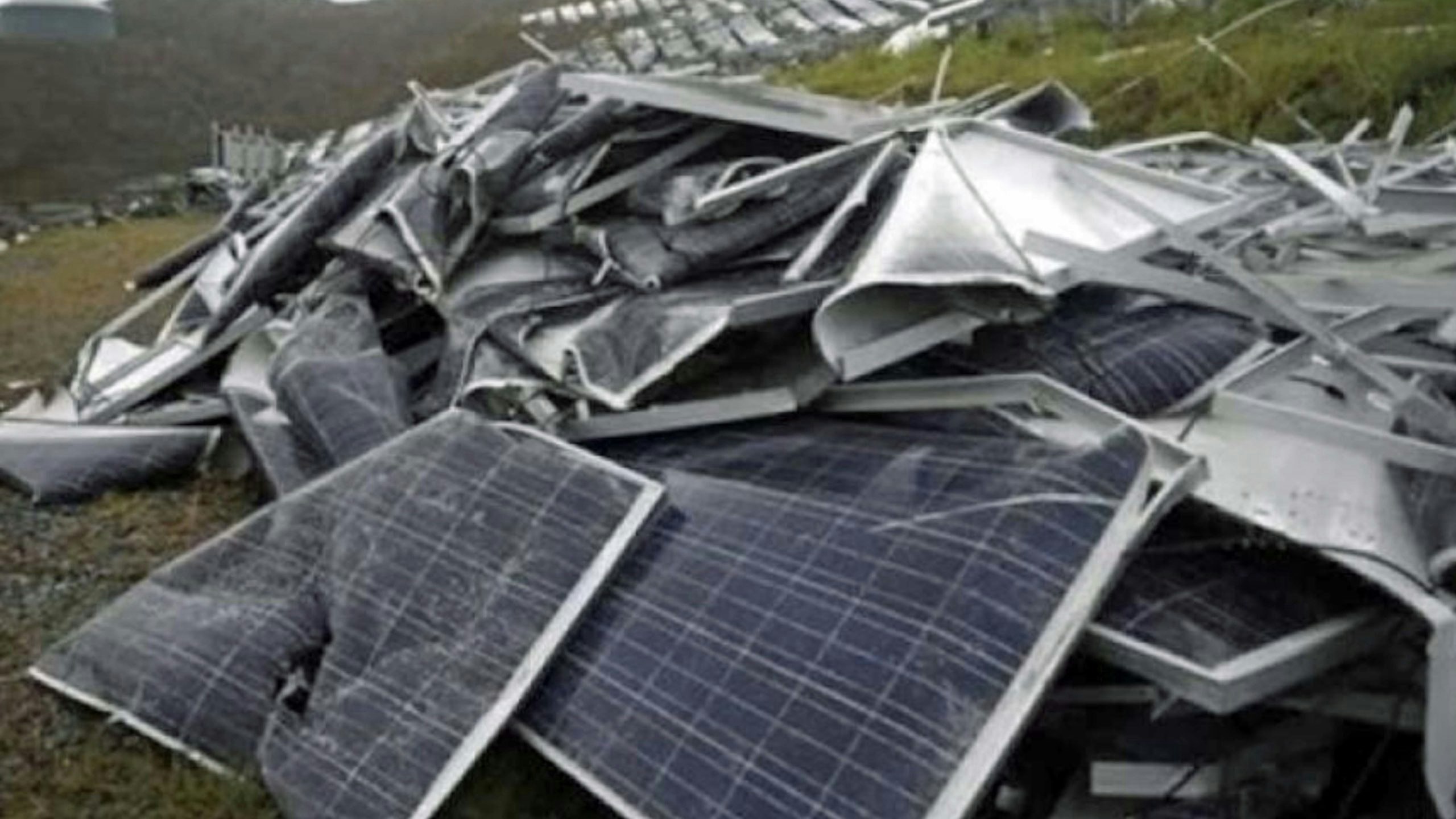By Clair McFarland, Cowboy State Daily
clair@cowboystatedaily.com
Wyoming in 2001 codified a reimbursement program for businesses and individuals to install rooftop solar power equipment. Known as net metering, the law allows for solar-powered buildings to stay on the power grid and to reap monetary credits from big energy producers like Rocky Mountain Power in exchange for power the solar equipment produces and pumps into the grid.
Solar panels from that era have a life span of roughly 20 years, according to industry experts, but multiple solid waste authorities in Wyoming told Cowboy State Daily on Wednesday they’re not yet seeing dead panels at their gates.
‘Has To Be Disposed Of’
When the panels do hit their end, the chemicals within the glass are a concern, said Andy Frey, superintendent of operations for Fremont County Solid Waste Disposal District.
“Solar panels are unique in comparison to other electronic waste,” said Frey. “There are very few facilities within the United States that will take them and deconstruct them.”
Arsenic, selenium and cadmium all can be found in the materials used to make the panels. Germanium, Indium, and tellurium also were identified as crucial to solar panel production in a June analysis by the U.S. Government Accountability Office.
Load of Solar Garbage
About a year ago, a load of solar garbage nearly made it into the Fremont County’s waste facility, but Frey stopped it, he said. That’s been the only solar-related waste incident in Fremont County – that he knows of.
“I actually personally saw it and stopped it,” said Frey, who took the opportunity to inform staff members that the facility won’t accept solar panels because of their potential to impact groundwater.
Fremont County’s waste facilities aren’t lined with a protective plastic barrier because they predate 1992, when synthetic lining was mandated to protect the surrounding ground from toxic leaching.
“It’s important for people to know that solar panels are a challenging item to properly dispose of, and they should not just freely dispose of them in the trash,” he said.
Recycling costs about $28 per solar module, versus about $1.38 per module for landfill disposal, according to a 2021 analysis by the National Renewable Energy Laboratory.
Frey estimated that the freight charge to ship a large load of defunct panels could be expensive.
“If we were openly accepting solar panels, we’d have the financial burden to ship them… and if that grew enough, (the cost) would then be spread to all the citizens of Fremont County,” said Frey. “So right now we’re just putting that burden on the people who are purging the items.” The chemical makeup of solar panels has change over the years, said Kevin Herman, general manager at Sweetwater County Solid Waste District No. 1.
Herman on Wednesday said though his facility has a lined cell, it still will not take the panels because there are worker hazard and other complications associated with them. He encouraged recycling.
“Today you hear, ‘You need to go with solar panels, electric vehicles, wind turbines – it’s all green power,’” said Herman. “That stuff has all got to be disposed of at some point. And a lot of that stuff is actually less environmentally friendly than they make it sound.”
Solar ‘The Way To Go’
The first wave of defunct solar panels hasn’t hit Casper Solid Waste yet, but the facility can probably handle it, according to Division Manager Cindie Langston.
“That has crossed my mind, that that might happen eventually,” said Langston, who was optimistic about the facility’s ability to process them.
Casper has both lined and unlined waste cells and in 2020 caught media attention for being one of a few facilities nationally with the capacity to handle hundreds of enormous fiberglass wind turbine blades.
“Personally I think solar panels are the way to go, as opposed to the wind turbines, because wind turbine blades wear out quicker,” said Langston.
Casper Solid Waste’s special waste area has its own rooftop solar setup of 12 years and aside from some wiring replacements, “they’re still in great shape,” said Langston.
As for accepting a possible solar panel deluge, Langston said the facility could crush the glass and bury it, or send it to a glass refinery business after crushing it. She added that the recycling industry “will be in a better place to handle (them) much more responsibly, and quicker, than they do turbine blades.”
Even the unlined Casper cells are slightly basic in chemical makeup, not acidic, said Langston, and therefore less likely to leach lead and other toxins into their surrounding groundwater.
Widespread Failure ‘Rare’
Widespread solar-panel failures are not common, said Jordan Freytag, marketing lead at Creative Energies, which serves all of Wyoming and Utah, and southeastern Idaho.
“It’s fairly rare for us to get widespread failing of panels. Sometimes there’s a defective piece or maybe a problem with an inverter – and we just deal with those as they come in,” said Freytag.
There is some complication with disposing of solar setups, Freytag continued, noting that his company has partnered with local recycling organizations “to make sure they’re properly disposed of.”
Freytag referenced a solar panel recycling center in Utah where he’s based.
The panels’ lifespans are growing. In 2001 when Wyoming enacted its net metering law, panels were estimated to last between 15 to 20 years; now they’re touted at 20 to 25, said Freytag, noting that his company has been involved in the solar scene for more than 20 years.
“We’re here for the entire solar-coaster,” he quipped.





